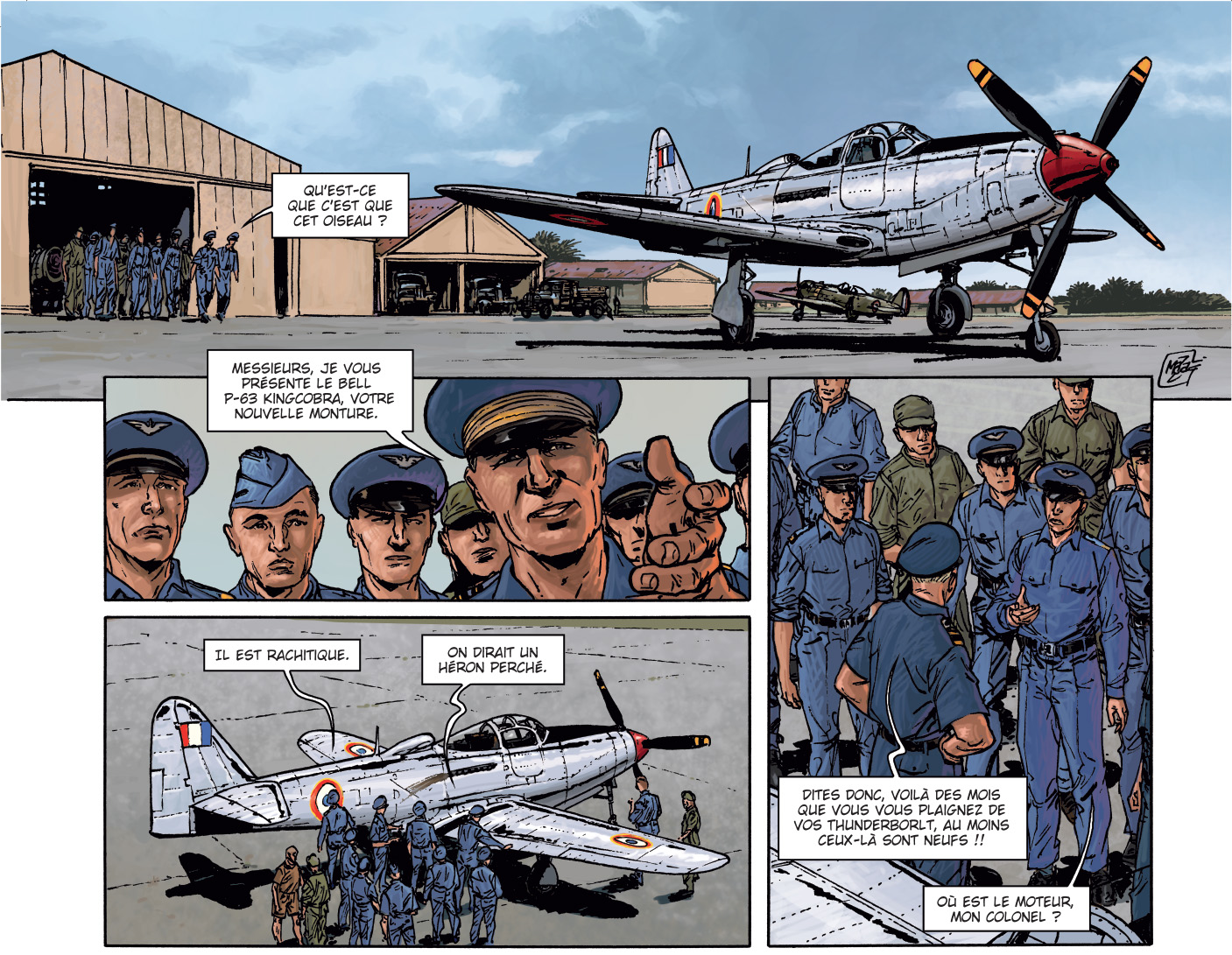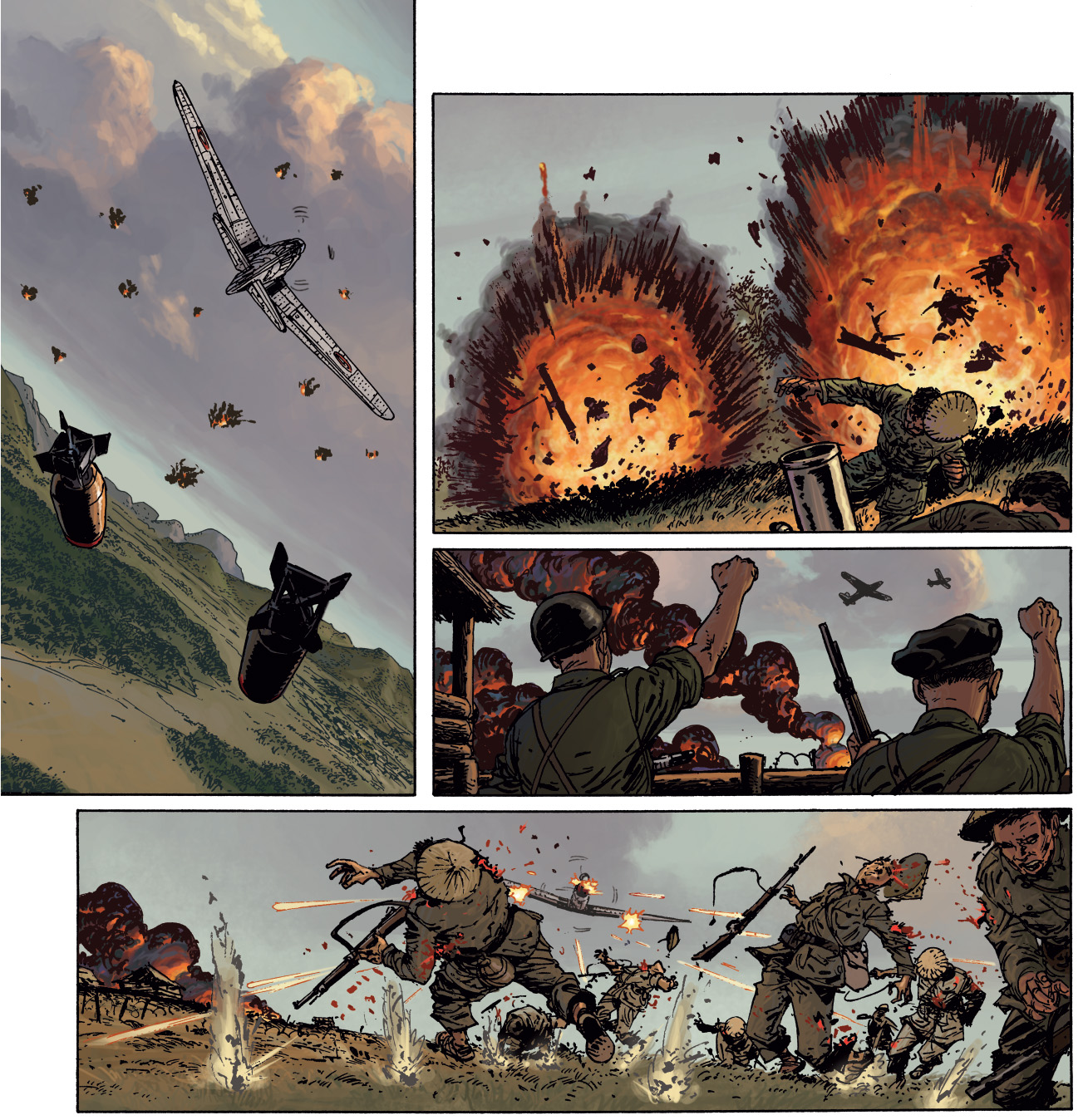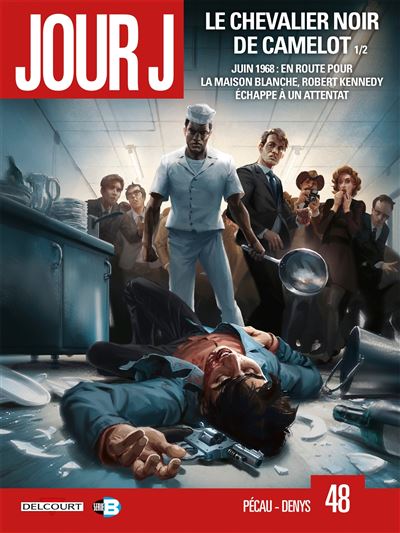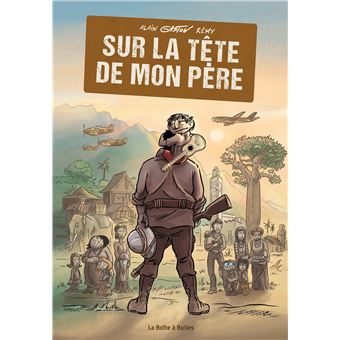Screenwriter Jean-Pierre Pécaud continues his account of the Indochina War through aviation in this second volume of a trilogy published by Delcourt. An adventurous pilot, opium traffickers and a war of decolonization, that's an explosive recipe, right?
A tumultuous biography

Indochina by screenwriter Jean-Pierre Pécaud does not try to tell the whole conflict but this trilogy tells the unique experience of pilot Armand Baverel during this period. He first had experience as a multiple pilot flying on warplanes – a P-47 Thunderbold then a P-63 Kingcobra – but also helicopters. He will be part of all the fights from his arrival in 1946 to the defeat of Dien Bien Phu. The text gives precisely the weapons, units and army corps but without ever being pedantic. This volume is mostly inflated with testosterone by going from a dogfight, to the rescue of a pilot fallen in enemy zone and then a whole company of infantrymen. Maza's drawing has been in the Franco-Belgian tradition since the 80s. Its ultra-precise style, especially on vehicles or uniforms, lends itself particularly well to the genre of historic comics. Its effective setting perfectly transcribes the deadly ballet of aerial combat.
But this distinguished pilot was also a rebel, a gambler, an opium smoker and a drinker. This life on the razor's edge led him in the first volume to participate in trafficking with Corsican friends and former Nazis converted into the Foreign Legion. Here, he spends his evenings in clubs and renders services without really knowing for which camp. Baverel is not a hero but a man who tries to survive the day and take advantage of the opportunities that come his way at night. This story does not necessarily seek the truth of a history book because it is based on the words of Baverel and some facts seem doubtful: did he really play with the orchestra of the last king of Cambodia?
Indochina highlighted by Pécaud

The stories about the Vietnam War are very numerous (both in cinema) but the conflict that precedes is very unknown, especially in comics. Indochina by Pécaud allows us to discover the life of a pilot in times of war. The aerial ballets show their dexterity as during a skirmish between French pilots and Chinese planes. However, technicians find it hard to stand the arrogance and constant complaints of these aces of the sky. Even if this book is part of a collection around military aviation, the pilot Baverel is not omnipresent. When the story requires it, the screenwriter Pécaud has the ability to go beyond the biography of a pilot to show the ground battles in trenches. The reader will discover a war much more complex than in your high school memories. Other colonized peoples are also part of the French army such as Moroccans in Dong Khê while Thais support the French army. The reader has a more global view of this war of liberation. The Vietminh use machine guns recovered from the Americans during World War II, but they also gained support from their powerful Chinese neighbor. On the contrary, US support seems much more fluctuating. But the French army was not spared because the general staff underestimated the Vietminh army which managed to transport heavy anti-aircraft guns through the jungle.
Through the realism of Maza's drawing and Pécaud's clever scenario, the reader plunges into the stress of a fighter in Indochina and the complexity of a conflict very rarely put forward. This story repairs a cruel lack. We can therefore salute the success of this book even if it still lacks the Indochinese point of view on the conflict.
You can find other chronicles on historical comics like this article on Hitler's corpse and this one on the theft of Einstein's brain.








































